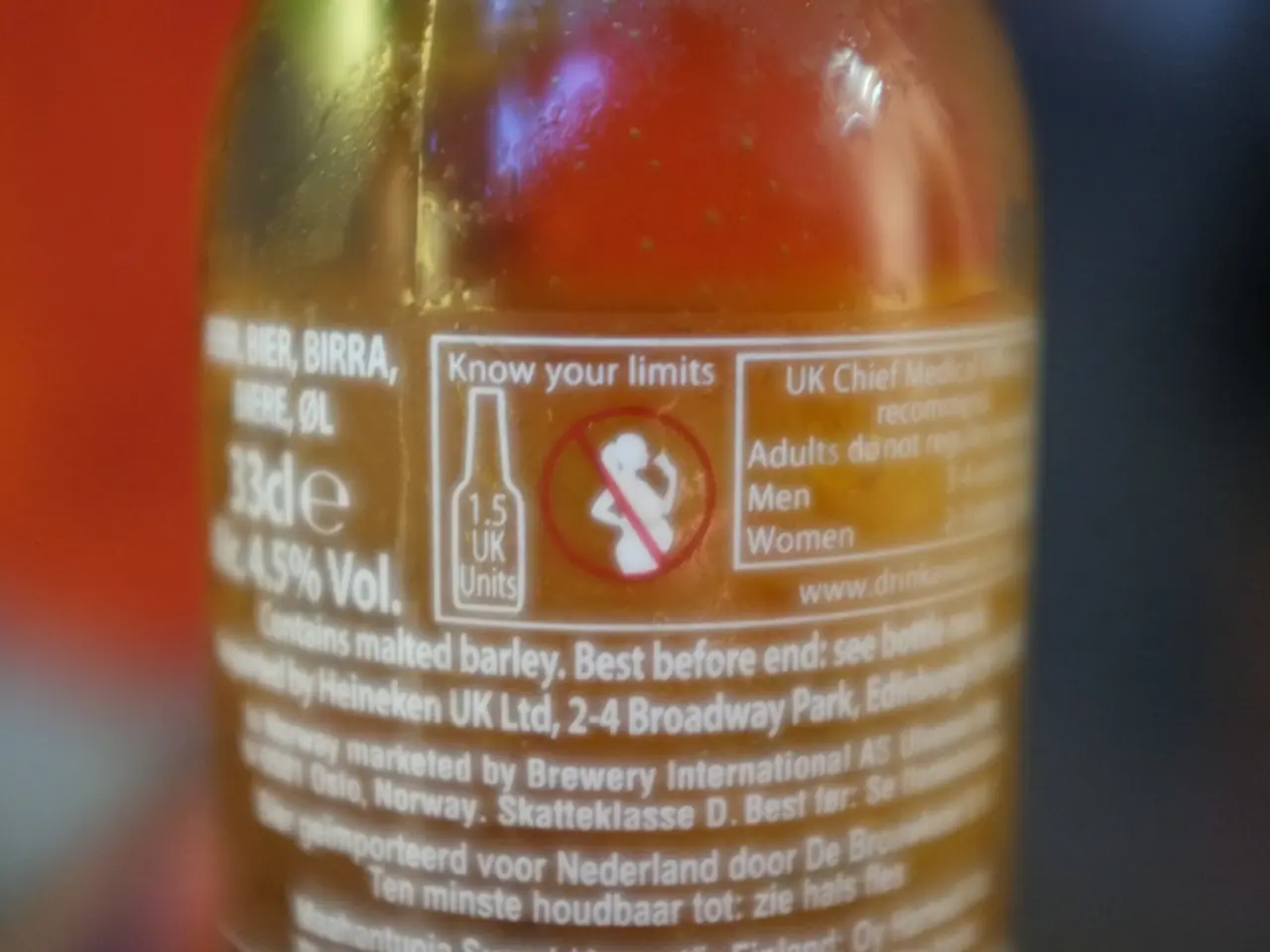Unknown facts about the presence of microplastics within the human body revealed
In recent years, the issue of microplastics has become a topic of significant concern, not only for the environment but also for human health. These tiny particles, measuring less than 5mm in size and even smaller nanoplastics below 0.001mm, have been found in various environments, from the River Thames to Mount Everest, and even inside human brains.
Microplastics can enter our bodies through ingestion and inhalation, with babies potentially consuming millions of microplastics daily from bottle feeding. The brain has emerged as a hotspot for plastic accumulation, with an average of 4.5 bottle caps worth of plastic detected.
The presence of microplastics in human tissues, including blood plasma and breast milk, indicates widespread human exposure. However, the behaviour of microplastics in human blood and other tissues is not yet fully understood, including whether they circulate freely or are taken up by immune cells.
Research has shown that microplastics can cause physical harm at the cellular and tissue levels due to their abrasive nature, potentially leading to internal injuries and inflammation. They can also adsorb and concentrate toxic chemical pollutants, such as persistent organic pollutants (POPs) and heavy metals, which may be released inside the body and cause endocrine disruption and developmental abnormalities.
While the current scientific consensus recognizes potential negative health effects, there is still no full scientific consensus on the direct causal impacts of microplastics on human health. Experimental methods, human exposure levels, and the long-term effects are areas requiring more research.
Public anxiety about microplastics in the body is high, and some early-stage technologies aim to remove microplastics from blood, such as therapeutic apheresis. However, these technologies are not yet supported by robust published evidence. Lifestyle changes like reducing plastic use and exposure are recommended to minimize risk.
A study focused on polystyrene as the only type of microplastic that's easy to test for, found that polyethene, one of the plastics which is difficult to measure around fat, is the main component of the detected plastic in the brain. A conservative estimate suggests there is around 0.15ug of plastic per millilitre in human blood.
The issue of microplastics in our bodies is complex and multifaceted, and further research is essential to clarify the extent of harm, exposure thresholds, and mechanisms. Current findings justify precaution and efforts to reduce microplastic pollution and human exposure.
- The underlying issue of microplastics has gained substantial attention in recent years, not just in the realm of environmental science, but also in relation to human health and wellness.
- These minuscule particles, measuring less than 5mm in size and even smaller nanoplastics below 0.001mm, have been discovered in diverse environments, such as the River Thames, Mount Everest, and even inside human brains.
- Research indicates that microplastics can infiltrate our bodies through consumption and inhalation, with babies potentially ingesting millions daily from bottle feeding, and can accumulate in the brain.
- Studies have demonstrated that microplastics can cause physical damage at a cellular and tissue level due to their abrasive nature, which might lead to internal injuries and inflammation.
- Moreover, microplastics can adsorb toxic chemical pollutants, such as persistent organic pollutants (POPs) and heavy metals, which may be released within the body, causing endocrine disruption and developmental abnormalities.
- Although the current scientific consensus acknowledges potential negative health effects, there is still no comprehensive scientific consensus on the direct causal impacts of microplastics on human health, necessitating further research on experimental methods, human exposure levels, and long-term consequences.




